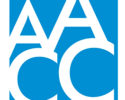Implications of tuition-free programs
By AACC 21st Century Center Staff
January 5, 2017
A new report assesses tuition-free higher education programs.
This week, New York’s Gov. Andrew Cuomo announced a plan to help students get through college debt-free. The plan would provide free tuition to a State University of New York or City University of New York college, including two-year community colleges, for residents whose families earn less than $125,000.
The National Association of Student Financial Aid Administrators (NASFAA) assembled a task force in June to look at the impact of tuition-free higher education, or Promise programs. A new report from the task force looks at 11 federal, state and local programs, including the Obama administration’s proposed America’s College Promise plan, the Tennessee Promise and the Milwaukee Area Technical College Promise program.
There are several factors that contribute to the success of a tuition-free program, the task force found. If a Promise program is offered at a community college, will it shift enrollment from a four-year institution? If it’s offered at a four-year institution, what happens to students wanting a two-year degree or certificate? And does an institution even have the capacity to support an influx of students enrolling due to the free college incentive? Can the K-12 system ensure those students are college ready by high school graduation?
Perhaps the biggest question: How is the free-tuition program being paid for? As the report points out, “there are often no additional resources required for needy students who are already fully eligible for Federal Pell Grants and state assistance at a community college because such students often have no out-of-pocket contribution for direct educational expenses.” And many states and colleges have worked to establish partnerships with local and corporate sponsors to supplement existing sources of state and federal aid so all recipients can benefit from the Promise program.
One of the recommendations from the task force for those looking at creating new programs: Look at the role of existing student aid programs, “so as not to add complexity to an already-complicated process.”
The full report is available online.
Discuss the report and tuition-free programs at AACC’s LinkedIn page.



